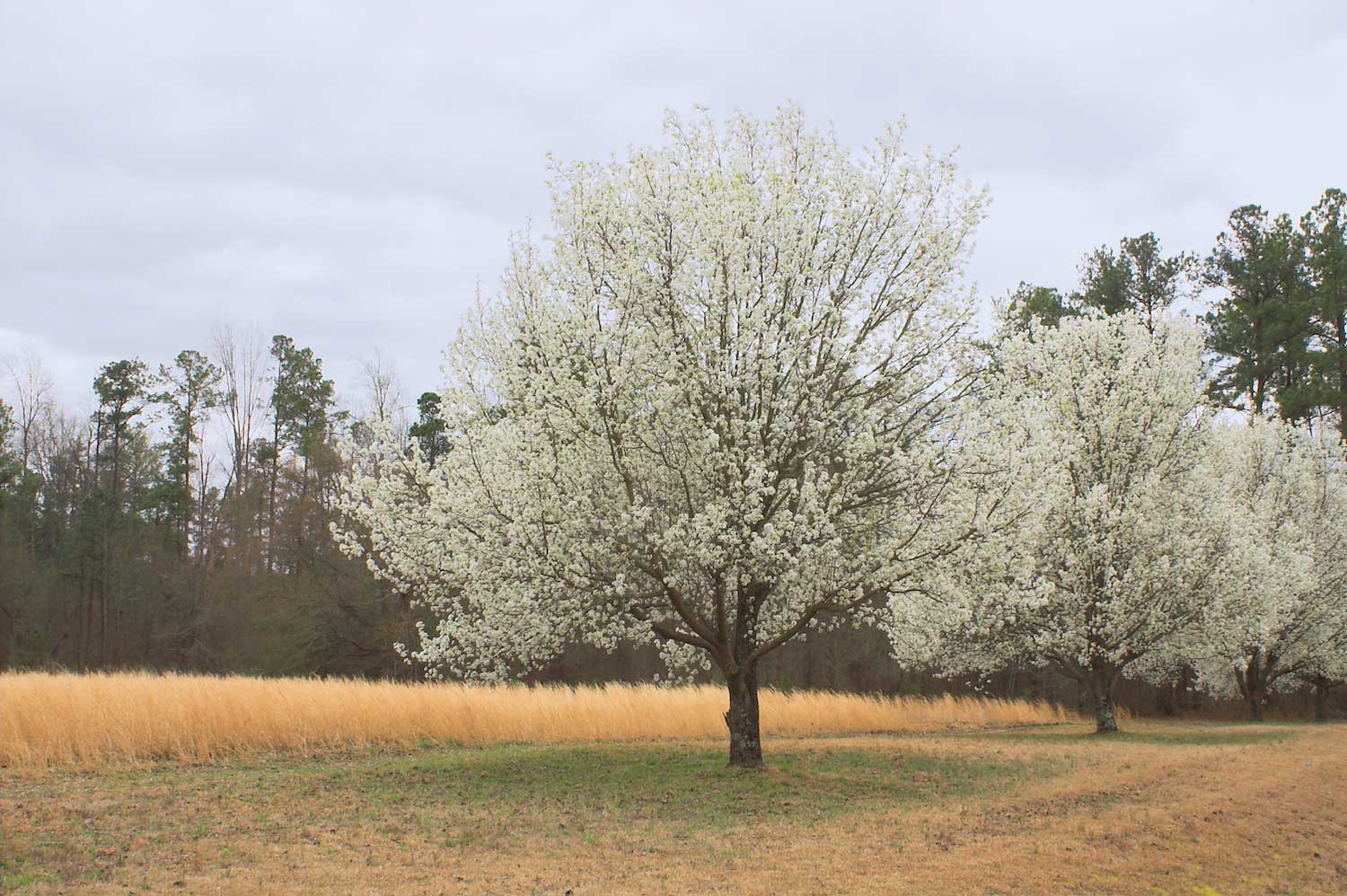What stinks? Bradford pear trees and their invasive tendencies

Spring has many pleasant smells associated with it — rain, freshly cut grass and blooming flowers to name just a few — but that less-than-pleasant odor wafting in the air right now may be coming from a tree in your backyard or neighborhood.
Callery pear trees are starting to bloom now, revealing a canopy of beautiful white blooms but also emitting a stench that's often compared to rotting fish, NPR reports. The smell lingers for as long as the white flowers do, making it unpleasant to be anywhere near the trees until the blooms finally fall to the ground.
Callery pears, often called Bradford pear trees because they are a cultivar of the Callery pear tree, are commonplace across most of the eastern United States. Native to China and Vietnam, they were introduced here by the U.S. Department of Agriculture in the 1960s as an ornamental landscape tree. They quickly took off in popularity because they are affordable and easy to grow and also can be transported easily, USA Today reports.
Their popularity has given root to the rotting fish smell that can permeate the air in many places at this time of year, especially on humid days. The trees were often planted in large numbers, row after row, along city streets and parkways as well as in our own backyards. Their fetid smell serves a purpose, and it's the same purpose that sweet-smelling flowers serve. Any smell emitted by a plant is to attract pollinators, which is what the Callery pear is doing with its awful smell.
The rotting stink the trees emit is just one problem with them. They're also relatively short lived and have a weak branch structure that makes them susceptible to damage from wind and storms. And worst of all is that they have invasive qualities that can allow them to spread quickly and overtake landscapes. That's why you'll see clusters of the trees in bloom in open spaces and empty lots.
Callery pear trees are able to spread so easily and rapidly because of their fruit, a pear so tiny it is difficult to see on the trees. Birds feast on the fruit then spread the seeds far and wide through their scat, WTTW reports. Farmers and conservation agencies, including the Forest Preserve District, must then work to remove these trees from farm fields and restored lands.
The tree is among 10 plants that the state of Illinois is assessing to determine whether their invasive nature qualities them as "noxious" and/or "exotic" weeds, WTTW reports. Such a classification would then make it illegal to sell or plant the trees in the state.
Between their invasive tendencies and propensity to become damaged in storms, some cities and states have already taken a firm stand against Bradford pear trees. Ohio, Pennsylvania and South Carolina have banned sales of the trees. Closer to home, in Champaign, the trees cannot be planted in city rights-of-way, the University of Illinois Extension reports.
Clemson University, in South Carolina, has taken its position against planting these trees one step further. The university's Cooperative Extension has for several years offered the Bradford Pear Bounty, encouraging South Carolina property owners to exchange up to five Bradford pear trees for an equal number of free native trees. The bounty concept has caught on, with other agencies also offering native replacement trees to property owners who remove Bradford pear trees.
Choosing native trees and plants for your yard is best because these plants are acclimated to the climate and soil conditions and, therefore, are more likely to thrive, according to the U.S. Forest Service. Native plants and trees also require less maintenance and upkeep and provide a healthy habitat for the wildlife in our area. Among the trees the Forest Service recommends in place of Bradford pear trees are eastern redbuds, flowering dogwoods and serviceberries.
